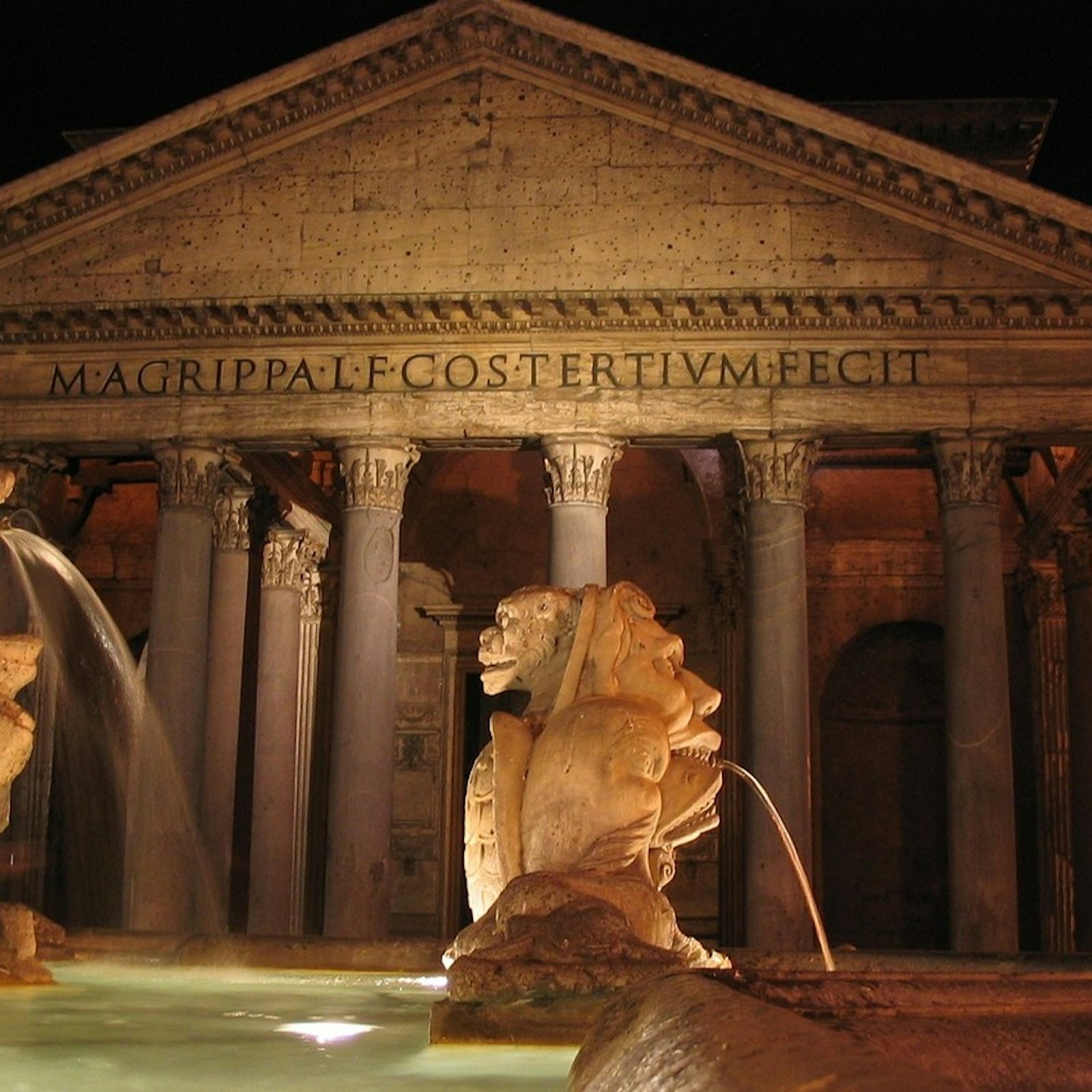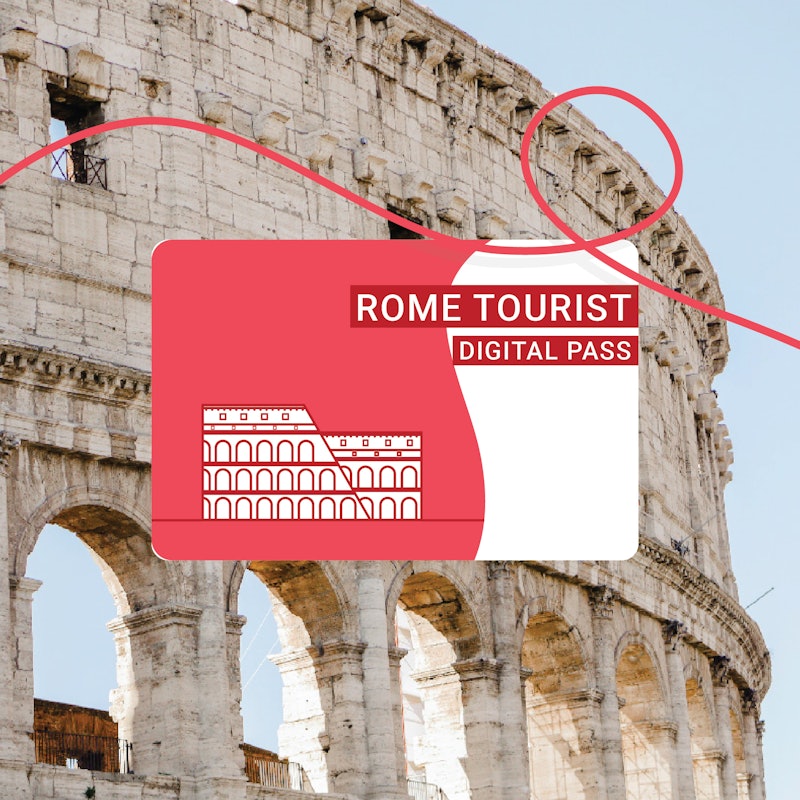Pantheon: Fast Track Ticket
Pantheon - Rome's Ancient Wonder!
- Pantheon: Skip The Line Entry Ticket

Tickets and Information For The Pantheon, Rome
- Pantheon Address: Piazza della Rotonda, 00186, Roma, RM, Italy.
- Opening Hours: Monday - Friday: 10:00 - 17:00. Saturday: 10:00 - 15:00. Sunday: 12:00 - 17:00
Is the Pantheon in Rome Worth Visiting
- If you are a fan of historical buildings steeped in history, then definitely, yes.
What You See At The Pantheon Rome
- The inside
- The Dome & Oculus
- Artwork
- Tombs
{{ticket-block-triple}}
About Pantheon, Rome
The Rome Pantheon is an architectural masterpiece in the heart of the city. It stands as the best condition of the remaining ancient Roman building, showing the exceptional quality of Roman engineering.
Its iconic façade and dome are recognised worldwide. The Pantheon still serves as both a place of worship and a symbol of Roman architectural innovation.
The name "Pantheon" comes from the Greek words "pan," meaning 'all,' and "theos," meaning 'god,' reflecting its original purpose as a temple dedicated to all Roman gods.
Historical records indicate that the original Pantheon was constructed between 27 BCE and 14 CE, having been commissioned by Marcus Agrippa, an architect and son-in-law of Emperor Augustus. After a fire around 80 CE, the Pantheon had to be reconstructed.
Remarkably, the Pantheon survived the advent of Christianity. In 608 AD, Emperor Phocas gifted the building to Pope Boniface IV, who transformed it into a church, and then dedicated it to St. Mary and the Martyrs in the 7th century.
The Pantheon has 16 huge columns at its entrance that welcome you, and make the building instantly recognisable. Its dome has a diameter of 43.3 metres, and still remains the largest unreinforced concrete dome in the world! The 'oculus,' which is the 8.2-meter-wide opening at the top of the dome, provides natural light and creates an extraordinary play of light and shadow throughout the day as the sun moves. The opening in the roof (the oculus) also means that rain can enter the Pantheon and it gets wet! When that happens, they have designed special drainage holes though to get rid of the water!
Inside, you are greeted by a vast cylindrical space with Corinthian columns, niches, and a remarkable collection of artwork that has been amassed over the centuries. The Pantheon also houses the tombs of several notable figures, including the renowned Renaissance artist Raphael and several Italian kings, adding to its historical significance.
The main altar, which is located directly beneath the oculus, is a focal point and is covered with religious iconography. The oculus which casts beams of light that aligns with the celestial movements also demonstrates the ancient Romans' advanced astronomical knowledge.
The Pantheon's design has influenced countless architects throughout history. Its dome has inspired structures such as the Florence Cathedral and St. Peter's Basilica.
The Pantheon now serves as both a major tourist attraction and a place of worship.
Popular Tickets
Popular Attractions
Pantheon Rome FAQs
- Is the Pantheon in Rome free to enter?
- The Pantheon in Rome used to be free to enter, yes. However, since 2023, it is no longer free for tourists. You must now purchase a ticket.
- Is the Pantheon Rome worth visiting?
- In our opinion, yes, definitely, especially if you are an architecture fan.
- Does it rain inside the Pantheon Rome because of the hole in the roof?
- It does rain in the Pantheon, yes! The hole in the roof (the Oculus) measures 8.2 meters in diameter, so when it rains, it does get in! The Pantheon has special drainage holes to get rid of the water though.
- Is the Pantheon Rome the oldest of the ancient buildings in Rome?
- Its not the oldest, but it is in the best condition of the remaining ancient buildings!
- Do you need to book tickets in advance to visit the Pantheon in Rome?
- Whereas it isn't compulsory to book in advance, we so strongly suggest booking online, yes. Its a very popular attraction and queues regularly form at the ticket office, so booking online can save you a lot of time.
Pantheon Rome Interesting Facts
- Oldest Intact Building in Rome: The Pantheon was built around 125 AD during Emperor Hadrian's reign, and is one of the best-preserved ancient Roman buildings. Remarkably, its structure has remained almost entirely intact over the centuries!
- Temple of All Gods: The name "Pantheon" comes from the Greek words "pan" (all) and "theos" (god), meaning "all gods." It was originally dedicated to all the gods of pagan Rome.
- Architectural Marvel: The Pantheon's dome remains the largest unreinforced concrete dome in the world, with a diameter of 43.3 metres (142 feet).
- The Oculus: At the centre of the dome is an opening called the ‘oculus’, which is 8.2 metres (27 feet) wide in diameter and it allows natural light to flood the interior. It also means that when it rains, it rains inside the Pantheon!
- Ingenious Drainage System: Which leads on to this fun fact - the floor of the Pantheon is slightly convex which then allows the rainwater that enters through the oculus to drain through 22 small holes in the floor!
- Perfect Proportions: The height from the floor to the oculus and the diameter of the dome are exactly the same, making the Pantheon a perfect sphere in terms of its internal dimensions.
- Michelangelo's Admiration: It’s said that Michelangelo once said that the Pantheon was the work of angels, not humans!
- Royal Tombs: The Pantheon is the final resting place of several Italian kings, including Victor Emmanuel II and Umberto I, as well as the famous Renaissance artist Raphael.
- Walls and Dome Composition: The dome is made from progressively lighter materials as it rises, with heavier stone at the base and lighter pumice near the top, reducing the weight and stress on the structure and helping it stand strong!
- Bronze Ceiling Stripping: In the 17th century, Pope Urban VIII ordered the removal of the bronze ceiling from the Pantheon's portico to be used in the construction of St. Peter's Basilica and for making cannons for Castel Sant'Angelo!
- Symbol of Rome's Power: The Pantheon’s endurance over time and its architectural brilliance have made it a lasting symbol of Rome's ancient power and engineering prowess!
- Pantheon in Name and Inspiration: The Pantheon in Rome has inspired the design of many buildings worldwide, including the Panthéon in Paris and the U.S. Capitol in Washington, D.C.
- Astronomical Alignment: On April 21st, the traditional founding date of Rome, the sunlight from the oculus precisely illuminates the Pantheon’s entrance at noon, celebrating the city's birth. So it was designed with a purpose!
- Influence on Renaissance Architecture: The Pantheon's design heavily influenced Renaissance architecture, particularly in its use of columns, domes, and harmonious proportions, shaping the future of Western architectural design.
Useful Information About Pantheon
Tips for visiting Rome Pantheon:
- Book Tickets Online: The Pantheon is an incredibly popular attraction in Rome. We suggest booking your tickets in advance as it can save you a lot of queuing time!
- Visit Early or Late: To avoid the crowds, visit the Pantheon early in the morning just as it opens, or later in the evening before it closes, if you can. This means you may be able to enjoy it with fewer people around.
- Respect the Space: Remember that the Pantheon is an active church (Basilica of St. Mary and the Martyrs) so dress modestly, covering shoulders and knees, and maintain a respectful demeanour inside. Refrain from loud talking, and be mindful of those who are there to pray or reflect.
- Look Up and Around: Take your time to appreciate the Pantheon’s unique architectural features. The coffered concrete dome, with its central oculus, is a masterpiece of ancient engineering. Explore the various niches and chapels, and don’t miss the tombs of famous individuals, including the artist Raphael and several Italian kings.
How to get there
- Pantheon Address: Piazza della Rotonda, 00186, Roma, RM, Italy.
- By Hop-on Hop-off Bus: Trevi Fountain Stop and a 5-minute walk (follow signs)
- By Train: Line A to Barberini Station followed by an 8-minute walk (follow signs)
- By Bus: #30; #40, #62, #64, #81, #87, #492
Opening Hours
- Monday: 10:00 - 17:00
- Tuesday: 10:00 - 17:00
- Wednesday: 10:00 - 17:00
- Thursday: 10:00 - 17:00
- Friday: 10:00 - 17:00
- Saturday: 10:00 - 15:00
- Sunday: 12:00 - 17:00





























